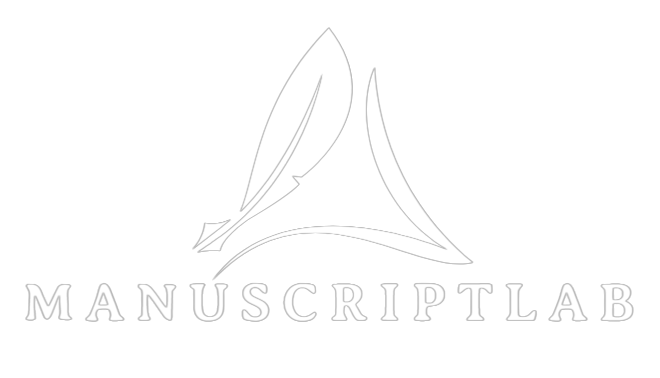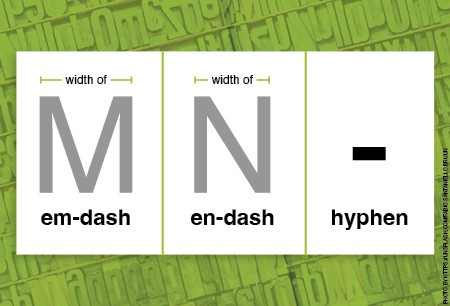The Em Dash is Versatile Tool of Emphasis and Interruption
The em dash (—) is arguably the most versatile and meaningful of the three marks, often described as a “pause” or a way to set off a portion of text with emphasis. Its name derives from its width, which is traditionally equivalent to the size of the letter “M” in the typeface being used.
Historical and Functional Overview
Historically, the em dash has been employed in a variety of contexts, from mimicking a conversational tone to replacing commas, parentheses, or even colons. According to the Chicago Manual of Style, the em dash is favored for its ability to insert a strong pause or shift in a sentence, allowing writers to introduce abrupt changes in thought or to emphasize a particular element within a sentence (University of Chicago Press, 2017).
For Example:
- The results of the study—unexpected as they were—offered new insights into the field.
- She had one goal in mind—success.
In these examples, the em dash effectively sets off additional information that interrupts the main clause, adding emphasis or a dramatic pause that might not be achieved as effectively with commas or parentheses.

Contemporary Usage and Debates
In contemporary writing, the use of the em dash has become more prominent, particularly in digital communication, where its visual impact can be striking. However, some grammarians argue that overuse of the em dash can lead to choppy writing or diminish the intended emphasis, advocating instead for a more restrained and judicious application (Pinker, 2014).
Moreover, there is ongoing debate about spacing with the em dash. While traditional typesetting in the United States often involves using the em dash without spaces, British style guides and some modern American texts prefer spaces before and after the dash, arguing that it enhances readability, particularly in dense texts (New Hart’s Rules, 2014).
Practical Implications
For writers aiming to create a dramatic or emphatic effect, the em dash offers a powerful tool. However, it is crucial to balance its usage with other punctuation marks to maintain fluidity and coherence in writing. The versatility of the em dash also makes it suitable for informal writing, where a conversational tone is desired.
The En Dash Bridging Connections and Ranges
The en dash (–) is a shorter line than the em dash but longer than a hyphen. Its width is typically equivalent to the letter “N” in the typeface being used, hence its name. The en dash is primarily used to denote ranges and connections, providing a link between two elements that have a close or dependent relationship.
The Functionality of the En Dash
The en dash’s primary function is to indicate ranges of numbers, dates, or time, replacing the word “to.” For example:
- The event will be held from 3:00 p.m.–5:00 p.m.
- The 2020–2024 strategic plan outlines several key initiatives.
In these examples, the en dash effectively connects the start and end points of the range, succinctly indicating the span without requiring additional words.
Additionally, the en dash is used to express a connection or relationship between two entities, such as in compound adjectives where one of the elements is multi-worded or already hyphenated:
- The New York–London flight was delayed.
- The post–World War II era saw significant economic changes.
The en dash subtly signals the close relationship between the words, indicating that they function together as a unit.
The Importance of Precision in Usage
One of the most common errors in punctuation involves the incorrect substitution of a hyphen for an en dash. While the visual difference may seem negligible to some, the misapplication can lead to ambiguity or a lack of precision in writing. For instance, using a hyphen in place of an en dash in the phrase “the 1999-2001 period” can confuse readers, as it may be interpreted as a single, compound adjective rather than a range of years.
The en dash’s role in clarifying relationships and ranges emphasize its importance in technical, academic, and formal writing. Adherence to its correct usage not only upholds grammatical standards but also enhances the clarity of the text, ensuring that the relationships between ideas, dates, or numbers are communicated unambiguously.
Scholarly Perspectives
The Oxford Style Manual emphasizes the en dash’s importance in maintaining clarity, particularly in complex texts where the precision of language is paramount (Ritter, 2002). By using the en dash correctly, writers can avoid potential misinterpretations and ensure that their writing adheres to the highest standards of academic rigor.
The Hyphen: A Compact Connector
The hyphen (-) is the shortest of the three marks and is primarily used to join words or parts of words together. Unlike the em and en dashes, the hyphen does not function as a punctuation mark that indicates a pause or range; rather, it serves as a connector that creates compound words or divides words at the end of a line.
Traditional and Modern Applications
Historically, hyphens have been used extensively in English to create compound words, such as “well-being,” “mother-in-law,” or “high-risk.” The hyphen ensures that the connected words are read together as a single unit with a specific meaning that might differ from the meanings of the individual words.
In addition to creating compound words, hyphens are also employed when adding prefixes or suffixes to certain words, especially when the prefix ends in a vowel and the root word begins with the same vowel, such as “re-enter” or “co-operate.”
Hyphenation is also used to break words at the end of a line in justified text, ensuring that the text appears neat and aligned. This practice, however, has become less common with the advent of digital word processing, which often adjusts line breaks automatically.
Shifts in Usage and Guidelines
Over the years, there has been a gradual shift in the use of hyphens, particularly in the creation of compound words. As language evolves, many compounds that were once hyphenated have become solid or open compounds. For instance, “email” was once commonly written as “e-mail,” and “on-line” has transitioned to “online.”
These changes reflect broader trends in language simplification and the influence of digital communication on spelling conventions. Style guides such as the AP Stylebook now recommend minimizing hyphenation where possible, especially in common and widely understood terms (Associated Press, 2019).
Nonetheless, the hyphen remains a crucial tool for avoiding ambiguity in writing. Consider the difference between “a small business owner” and “a small-business owner.” In the latter, the hyphen clarifies that the owner is involved in a small business, rather than being small in stature.
Practical Considerations
For academic and formal writing, understanding when to use hyphens is essential for ensuring clarity and precision. While trends may shift, the fundamental role of the hyphen as a connector remains unchanged. Writers should adhere to style guides relevant to their field to ensure that their use of hyphens aligns with current conventions.
Conclusion
In the realm of punctuation, the em dash, en dash, and hyphen each play distinct and essential roles, contributing to the clarity, precision, and readability of written language. The em dash serves as a powerful tool for emphasis and interruption, the en dash functions as a connector for ranges and relationships, and the hyphen acts as a crucial link between words.
While their differences may seem subtle, mastering the correct use of these punctuation marks is vital for anyone engaged in writing, whether in academic, professional, or creative contexts. By adhering to established guidelines and understanding the specific functions of each mark, writers can enhance the clarity and impact of their work, ensuring that their ideas are communicated with the utmost precision.
As language continues to evolve, the importance of these punctuation marks remains constant, underscoring the need for writers to stay informed about best practices and emerging trends. Ultimately, the careful and considered use of the em dash, en dash, and hyphen reflects not only a writer’s attention to detail but also their commitment to effective communication.












